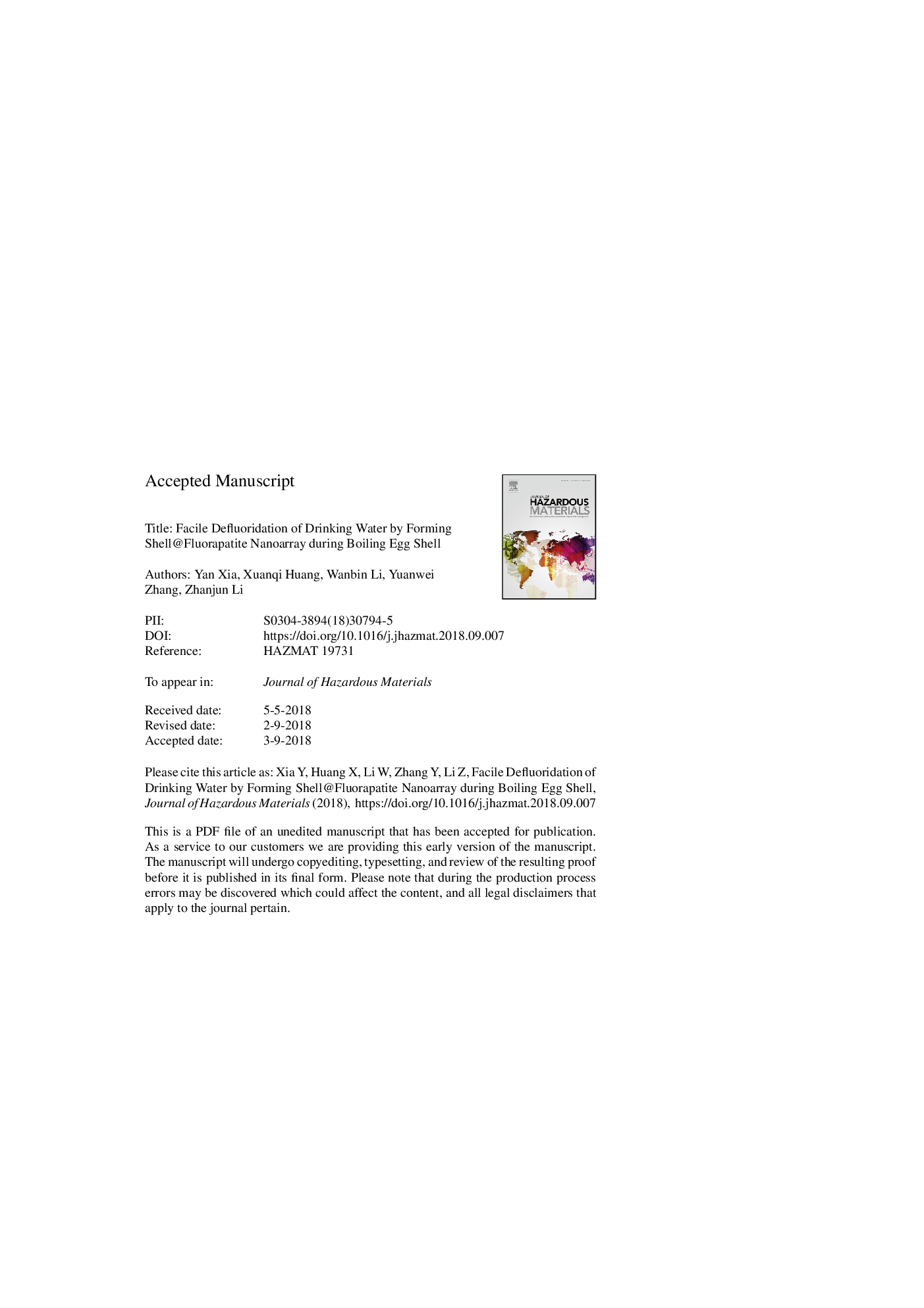| Article ID | Journal | Published Year | Pages | File Type |
|---|---|---|---|---|
| 10139696 | Journal of Hazardous Materials | 2019 | 29 Pages |
Abstract
High fluoride water is one of the major problems against drinking water and are affecting millions of people all over the world. Refined adsorbents and water treatment plants aim at massive water supply but can't meet scattered household requirements, especially in the developing areas. Here, we developed a facile defluoridation method in which Fâ can be removed by boiling eggs or shell assisted by phosphate. 0.4âL of high fluoride water (10âmg/L) can be transformed to safe drinking water with Fâ concentration lower than 1.5âmg/L by boiling one egg at 80â°C for 10âmin with the addition of 0.3âg/L of NaH2PO4 and 0.05 v% acetic acid. The mechanism study shows that Fâ is adsorbed onto the egg shell outer surface forming nanorod arrays of fluorapatite and/or Fâ substituted hydroxyapatite. Higher Fâ adsorption capacity can be obtained (Langmuir adsorption capacity, 47.9âmg/g) if using egg shell powder instead of whole eggs. Pilot scale defluoridation (2.5âL, 10 times) was successfully realized by boiling egg shell in the presence of phosphate and acetic acid. The boiling shell defluoridation technology has potential household applications by common people with little professional backgrounds.
Related Topics
Physical Sciences and Engineering
Chemical Engineering
Chemical Health and Safety
Authors
Yan Xia, Xuanqi Huang, Wanbin Li, Yuanwei Zhang, Zhanjun Li,
